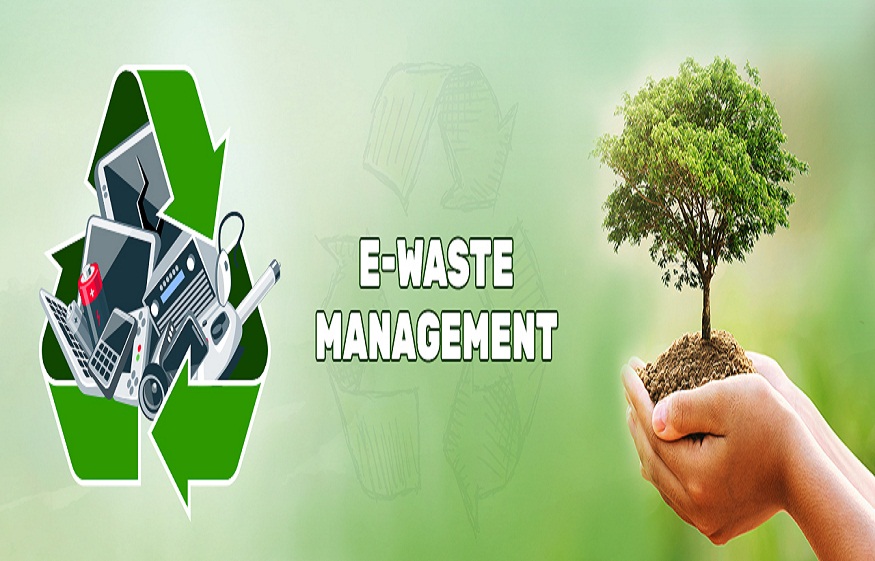In our tech-driven world, gadgets come and go faster than ever. But have you ever stopped to think about what happens to your old phone, broken laptop, or outdated television? These discarded electronics are known as e-waste, and they’re silently becoming one of the planet’s most dangerous environmental threats.
Let’s dive into what electronic waste really is, how it’s affecting our environment, and what steps we can take—both as individuals and communities—to manage it effectively.
What is E-Waste?
Electronic waste, also known as E-waste is simply any piece of electronic device that has been discarded and is no longer needed. This includes everything from smartphones, computers, TVs, and refrigerators to smaller gadgets like electric shavers and chargers.
Managing this waste effectively is known as e waste management or waste management electronic waste, which involves the collection, recycling, reuse, and responsible disposal of electronic products.
Global E-Waste Statistics
The numbers are alarming. According to the Global E-waste Monitor, the world generated over 53.6 million metric tonnes of e waste in 2019 alone—and this number is expected to grow to 74 million tonnes by 2030. Shockingly, only 17.4% of global e waste is documented as properly collected and recycled.
Why E-Waste is a Growing Problem
- Improper disposal leads to severe environmental and health hazards.
- Rapid consumerism means devices are replaced faster than ever.
- Lack of e waste recycling systems in many countries results in landfills overflowing with harmful materials.
Causes of E-Waste Generation
- Rapid Technological Advancement
New models, features, and upgrades make older gadgets obsolete almost overnight, contributing to excessive electronic waste.
- Consumer Behavior
Consumers often discard functioning devices in favor of newer models.
- Planned Obsolescence
Manufacturers design products with shorter lifespans, pushing consumers to buy new products frequently. This happens to be one of the biggest cause of e-waste.
- Lack of Proper Recycling Infrastructure
Several regions don’t have facilities related to electrical waste recycling and e-waste recycling which causes you to dispose in manner that is unsafe.
- Improper Disposal Practices
Dumping electronics in household bins or informal landfills contributes directly to e waste impact on environment and public health.
Environmental Impacts of E-Waste
- Soil and Water Contamination
Leaching of chemicals like lead and mercury into the soil and groundwater poisons ecosystems and food chains.
- Harm to Wildlife and Ecosystems
Toxic runoffs from landfills contaminate water bodies, affecting fish, birds, and other wildlife.
- Health Risks to Humans
People working in unregulated e waste disposal centers are exposed to carcinogens, leading to chronic health issues.
Advantages of E-Waste Recycling
- Valuable Resource Recovery
This process of recovery can cause extraction of several metals like copper, silver and cold, which reduces the need for conserving resources that are natural.
- Job Creation in the Recycling Industry
Proper ewaste recycling facilities generate employment opportunities, boosting green economies.
- Encouragement of Innovation in Recycling Tech
The rise in e waste management fuels advancements in green technologies and smart recycling methods.
Solutions and Ways to Tackle E-Waste
- Raise Awareness and Educate Consumers
Knowing the impact of e waste is important. Public awareness campaigns can drive responsible consumer behavior.
- Adopt the 3Rs: Reduce, Reuse, Recycle
A strong foundation for waste management, this approach reduces overall electronic consumption and promotes sustainability.
- Extended Producer Responsibility (EPR) Programs
E waste EPR policies make manufacturers responsible for collecting and recycling their products. Initiatives like EPR in India are gaining traction.
- Government Regulations and International Cooperation
Strong policy frameworks and global partnerships are needed to tackle the cross-border flow of electronic waste.
- Promote Right to Repair and Product Longevity
Empowering users to repair devices delays disposal and minimizes e waste generation.
- Encourage Donations and Resale of Old Electronics
Many devices are still functional and can be reused by others, minimizing e waste and recycling needs.
- Use Certified E-Waste Recyclers Like Attero
Partnering with certified recyclers ensures responsible e waste disposal. Companies like Attero are leading the way in epr services and epr waste management.
Conclusion
The growing mountain of e waste is more than just clutter—it’s a crisis. But with informed choices, smart policies, and a collective push toward better waste management, we can reduce its environmental impact. Whether it’s choosing to repair instead of replace or opting for certified recyclers, every action counts in building a cleaner, greener future.
FAQ
What is e-waste and how does it impact the environment?
E-waste refers to discarded electronics. When not managed properly, it releases toxic materials that pollute air, water, and soil, harming wildlife and human health.
How can we reduce the impact of e-waste on the environment?
All one needs to do is recycle in a responsible manner, support management programs and adopt a few sustainable habits as well.
What are the environmental impacts of electronic products?
Disposing electronic waste in an improper fashion can contaminate ecosystems and even kill living creatures.
How to solve the problem of e-waste?
Solutions include promoting e waste recycling, enforcing EPR in waste management, building infrastructure, and spreading awareness.
What is the main cause of e-waste?
The causes of e waste include fast tech evolution, consumerism, planned obsolescence, and poor waste management electronic waste systems.




